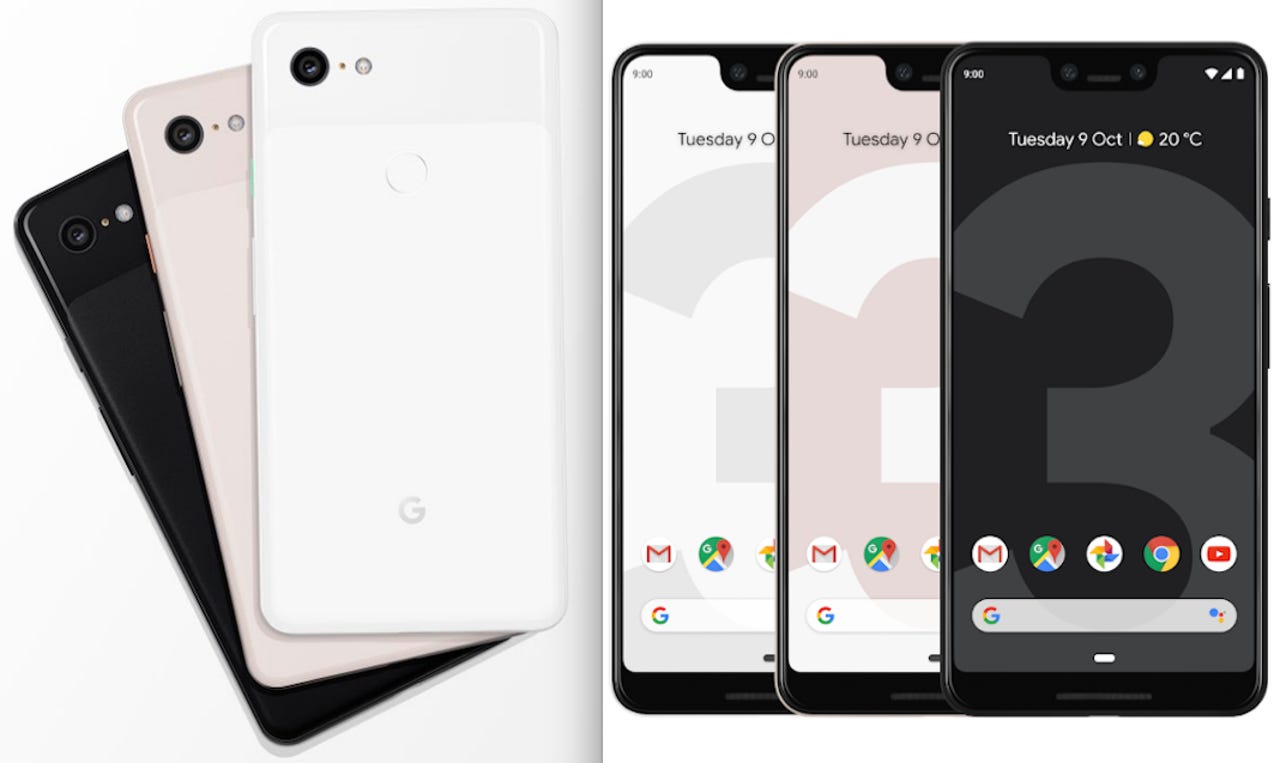Google Pixel bets on software, localisation to entice APAC consumers


Pixel 3 (Credit: Google)
Google is betting on its software portfolio and market localisation to convince Asia-Pacific consumers they need its latest smartphones, Pixel 3 and Pixel 3 XL.
Available from November 1 in five markets in this region, including Singapore, Japan, and Taiwan, the third iteration of Google's smartphones showcase tighter integration with the vendor's applications--in particular, those powered by artificial intelligence (AI) and machine learning, such as Google Lens.
Mobile devices increasingly would be integrated with machine learning and AI technologies, so consumers could get the most use out of these devices, said Dan Saunders, global director for Google Pixel, who was in Singapore for the official launch event Wednesday.
"And key to this is to be able to anticipate the needs of users at any point in time," Saunders said in an interview with ZDNet, on the sidelines of the launch.
For instance, the phone will switch to a different mode when it is docked on the new wireless charging pad, Pixel Stand, becoming a digital photo frame and triggering the "sunrise alarm" feature, which gradually brightens the screen to wake the user.
"The assumption is the stand is [likely] by your bedside and [because] we know the context of time, we can render the different states and suggestions that are most meaningful at that point," he explained.
"We can expect more of such features moving forward, as opposed to the users having to drill down several layers to find what they. The phone understands where you are, time of day, what it is you're likely to want to do, and present that to you to remove friction from the overall experience."
Catering to users' needs also meant localisation was crucial and Google invested significant efforts in localising its products, said Martin Geh, Google's Asia-Pacific managing director of hardware partnerships.
He pointed to Google Assistant's support for Singaporean English, or more commonly known as Singlish, which was first unveiled last year. Singlish incorporates local colloquial terms and expressions.
Geh said Google still was the only company that included Singlish as one of its language support and this focus on localisation extended beyond its mobile phones.
"The approach we take is to not only see whether a market is big enough, but also to look at the characteristics we need in our products to fit that market," he said. "Be it larger screens, more localisation in terms of language or content, or products and services that need to be tuned. So in all our five markets [where Pixel 3 will be available], we take a thoughtful, differentiated approach."
Saunders added that this focus was applied globally and involved assessing what new markets might require in terms of localisation to ensure a "meaningful" user experience, whether this meant understanding nuances in natural language processing or different dialects.
Singapore Pixel prices, availability
According to Geh, Taiwan and Japan this year were added to the list of Asian markets where Pixel would be available. Worldwide, the mobile phone would be launched in 13 markets, including Italy, Germany, and Canada.
In Singapore, the 5.5-inch Pixel 3 currently is available for pre-orders from S$1,249, while the 6.3-inch Pixel 3 XL is priced from S$1, 399. The Pixel Stand is tagged at S$119.
The smartphones will run on Android 9 Pie and are available in three colours: white, black, and pink. All three colour options can be purchased on Google's online store in Singapore, or through local carrier Singtel. StarHub customers can choose between the white or black option.
Included with each smartphone is Google's Pixel USB-C earbuds.
The new smartphones also boast several new camera features such as Top Shot, which captures shots 1.5 seconds before and after the user hits the camera button. It then taps AI to recommend the best shot amongst these. According to Google, these additional pictures are stored for free on the cloud--as with all photos and videos taken on the Pixel--and will not consume additional storage on the device.
A new Playground feature also enables Pixel 3 users to add animated stickers and superhero characters when they take photos and selfies or videos.
In addition, with the integrated Google Lens app, Pixel 3 users can scan and translate text, capture and identify images such as a type of dog breed, or locate similar designs of a dress for purchase online. The Google smartphone will show up results that are local to the users' whereabouts, such as the Singapore site of an online retailer.
When asked, the Google executives declined to reveal how many Pixel units had been sold in the region.
According to IDC, some 3.9 million units of Google Pixel were sold worldwide last year, double that of teh previous year. In comparison, Apple moved 1 million units of its smartphone a day.
On competition with the iPhone maker, Saunders said Google was a "product- and user-centric" company and focused its efforts on building "the best hardware and software experience".
On competition with recent market entrants such as games hardware maker Razer, he said the Pixel also featured a robust computational platform that rendered games well.
Geh added that the Pixel XL, with its bigger screen size and front-facing speakers, made for a good game device.